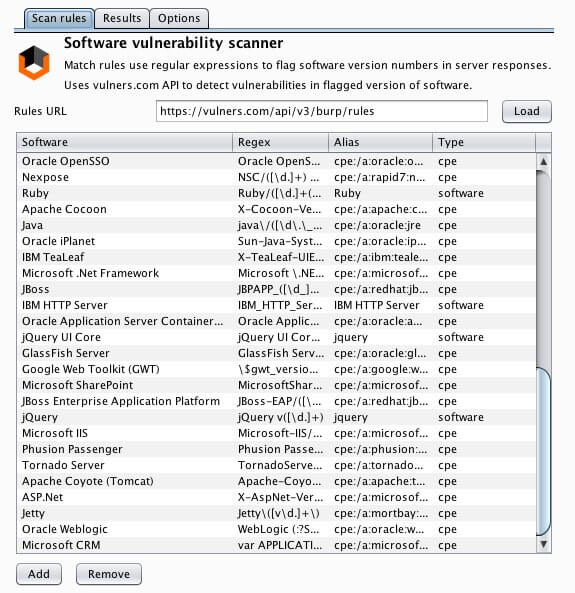

Worse, such attacks have grown steadily over the past few years. According to Forrester Research, web applications are a leading vector of incursion. And these types of attacks are a major problem. Website scanners are essential technology in thwarting cybersecurity attacks against web applications. We may make money when you click on links to our partners. It should be noted that all the internal options are the same.EWEEK content and product recommendations are editorially independent. Rather than redirecting you to the customization menu, it asks you about where to go, for crawl optimization or audit configuration.
Burp software vulnerability scanner how to#
Thus, to do all this, everyone needs a “URL”.įollow these steps to see how to do this:Ģ_ Select “ New Scan“, and now this time opt “ Crawl & Audit“, further mention the URL within it.ģ_ Now you should check the Scan Configuration options, as you move there and when you click on the “ New” button. In addition, it examines it for vulnerabilities. Note that Burpsuite gives you the opportunity to scan end-to-end, where Burpsuite crawls the application and discovers its contents and features. In this section, we are going to teach you how to Crawling & Scanning with an Advanced Scenario. How to Scanning with an Advanced Scenario on Burpsuite If you want to check the pages or a specific directory, you can simply navigate the left side of the below window and select your desired option there. For this, you can simply double-click the “ Params” field. With this dumped data you can simply segregate the URLs that contain the Input values which thus can be further tested on. It should be noted that a number of major vulnerabilities exist due to the unsanitized input fields. You can now see the result from the sitemap section of the Target tab: Then you will see in the event log that the event “ Crawl started”. In this section, you have to click the “ New Scan” button at the top of the Tasks section to scan the web application.ĭoing so will take you to a pop-up window called “ New Scan” which includes the following options:Īs you can see in the image below, in this section you have to type the URL you want and then click “ OK“.Īfter doing this, the window will get disappeared and over in the dashboard your new task aligned. So, to start working with the crawler, you need to open the Burpsuite and navigate to the Dashboard there.Īs soon as you land on the dashboard, you can see the specified number of subsets. This helps you control burp’s automated activities in a single location. But the burp crawler is already defined in the dashboard. The spider holds a special tab on the Burpsuite screen. How to Crawl Using the Default Configuration Finally, we will fully introduce you to How to Scan websites with Burp Suite. Then we will deal with how to customize the crawler. In the rest of this article, we are going to teach you how to crawl using the default configuration in the first step. Recommended Article: Introduction and check of Burp Suite capabilities Scan websites with Burp Suite You can also configure shortcuts to create instant scans.

You can access these options by right-clicking on the request. In other words, you can quickly scan for vulnerabilities without having to open a scan launcher. You can use this method to perform immediate or inactive scans from the context menu. This will open the launch of a live scan that lets you configure the details of the work. To do this, you can go to Burp Dashboards and click on the “ New Live Task” button. You can configure exactly which requests are processed and should be scanned for identifying content or examination of vulnerabilities. This method is used to automatically scan requests that are processed by other Burp tools, such as Proxy or Repeater tools. With this, the scan launch opens that allows you to configure scan details. To do this, select one or more requests anywhere in Burp and select “ Scan” from the context menu. With this, the scan launch opens that allows you to configure scan details.īy doing this, you can scan only audit (no crawl) from specific HTTP requests. To do this, you can go to Burp dashboards and click on the “ New Scan” button. In this method, the scan is provided by crawling content in one or more URLs and examining the content of the truffle.


 0 kommentar(er)
0 kommentar(er)
